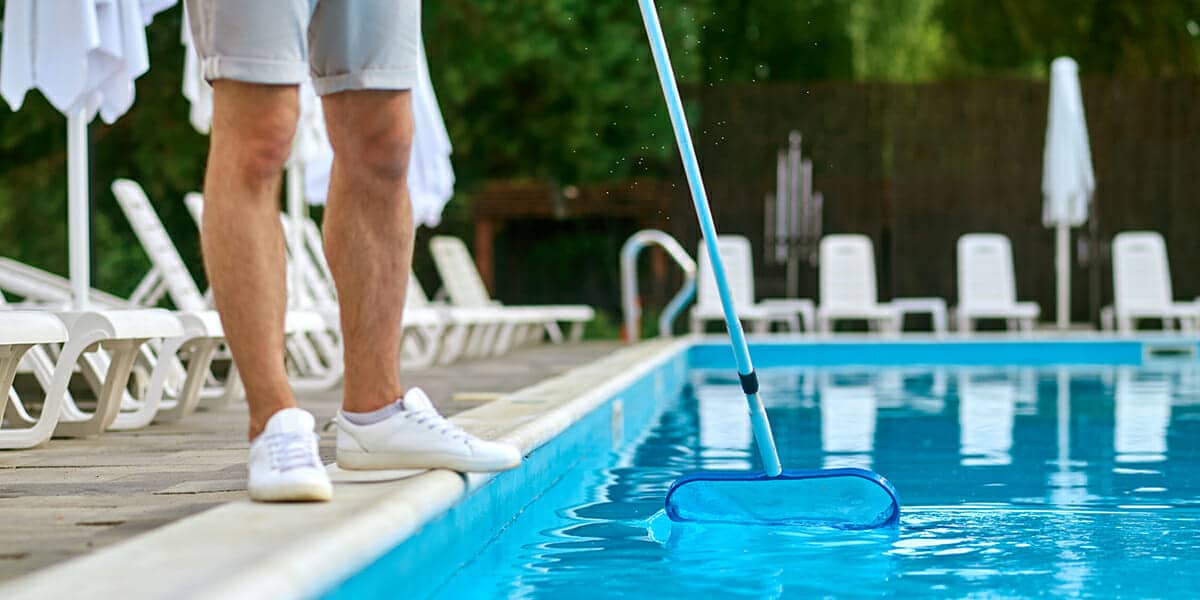Owning a swimming pool is a luxury that comes with the responsibility of maintenance and occasional upgrades. Two common terms often thrown around in pool maintenance are “pool resurfacing” and “replastering.” While these processes might seem similar, they serve different purposes and offer distinct benefits. This comprehensive guide will explore the differences, benefits, and considerations of pool resurfacing vs replastering.
What is Pool Resurfacing?
Pool resurfacing involves applying a new finish to the entire interior surface of a swimming pool. This process can significantly improve the pool’s appearance and functionality.
Key Benefits of Pool Resurfacing:
- Enhanced Aesthetics: Resurfacing provides a fresh, clean look to the pool, making it more visually appealing.
- Improved Durability: New surfaces are often more resistant to cracks, stains, and other damage.
- Increased Safety: A smooth surface reduces the risk of injuries caused by rough or damaged areas.
Common Resurfacing Materials:
- Quartz Aggregate: A mix of quartz, cement, and other additives, providing strength and water resistance.
- Pebble Surface: Durable pebbles mixed with aggregates for a strong, textured finish.
- Glass Beads: Rounded glass beads combined with standard materials for a striking mosaic look.
What is Replastering?
Replastering, a subset of resurfacing, specifically refers to the process of applying a new layer of plaster to the pool’s interior. It is often done to repair or refresh the pool’s surface.
Key Benefits of Replastering:
- Restored Smoothness: Replastering smooths out the pool’s surface, enhancing comfort for swimmers.
- Cost-Effective: Generally less expensive than full resurfacing, making it a popular choice for minor repairs.
Steps in Replastering:
- Draining the Pool: Ensuring the pool is empty before starting the work.
- Prepping the Surface: Removing old plaster and cleaning the surface.
- Applying New Plaster: Applying the new plaster layer evenly across the pool’s interior.
- Curing the Surface: Allowing time for the plaster to set and cure properly.
Comparing Pool Resurfacing vs Replastering
Understanding the differences between these two processes is crucial for making an informed decision about your pool’s maintenance needs.
When to Choose Pool Resurfacing:
- When the pool surface has significant damage or wear.
- To upgrade to more durable or aesthetically pleasing materials.
- If you want to completely change the look and feel of your pool.
When to Choose Replastering:
- For minor repairs or when the existing plaster is worn out.
- When you are on a tighter budget but need to refresh the pool’s surface.
- To maintain the traditional look of your pool with a fresh plaster layer.
Detailed Comparison: Pool Resurfacing vs Replastering
1. Material Variety:
- Pool Resurfacing: Offers a wide range of materials like quartz, pebble, and glass beads.
- Replastering: Typically involves only plaster, limiting aesthetic options.
2. Longevity and Durability:
- Pool Resurfacing: Newer materials can offer longer-lasting and more durable surfaces.
- Replastering: While durable, plaster may require more frequent touch-ups over time.
3. Cost Considerations:
- Pool Resurfacing: Generally more expensive due to the use of advanced materials and techniques.
- Replastering: More cost-effective for minor upgrades and maintenance.
4. Aesthetic Appeal:
- Pool Resurfacing: Provides a chance to significantly upgrade the pool’s look with modern materials.
- Replastering: Refreshes the appearance but with limited material choices.
5. Time and Effort:
- Pool Resurfacing: More extensive process requiring more time and labor.
- Replastering: Quicker and simpler, often completed in a shorter timeframe.
Benefits of Pool Resurfacing
Pool resurfacing not only restores the pool’s appearance but also enhances its overall performance and safety. Here are some detailed benefits:
Enhanced Aesthetics:
- Vibrant Colors and Patterns: Modern resurfacing materials offer a variety of colors and patterns to choose from.
- Sleek, Modern Look: Transform an old pool into a contemporary oasis.
Improved Functionality and Efficiency:
- Better Water Quality: Upgraded surfaces can improve water quality and reduce maintenance needs.
- Energy Efficiency: Incorporating energy-saving equipment during resurfacing can lower operational costs.
Added Water Features:
- Waterfalls and Fountains: Enhance the pool’s ambiance with elegant water features.
- Bubbling Jets and Spa Features: Create a relaxing, spa-like experience.
Safety Enhancements:
- Updated Safety Features: Install new safety features like pool covers or alarms.
- Proper Fencing and Gates: Ensure the pool area is secure, especially for households with children.
Frequently Asked Questions
1. What is the primary difference between pool resurfacing and replastering?
- Answer: Pool resurfacing involves applying a new finish to the entire pool surface using various materials, while replastering specifically refers to applying a new plaster layer to refresh or repair the pool’s interior.
2. How do I know if my pool needs resurfacing?
- Answer: Signs include visible cracks, rough textures, stains, excessive water loss, and a worn-out appearance.
3. What should I expect after pool resurfacing?
- Answer: You can expect a smoother texture, improved durability, enhanced aesthetics, and easier maintenance.
4. Why is pool resurfacing important?
- Answer: Resurfacing improves safety, extends the pool’s lifespan, enhances its look, and increases property value.
5. How much does it cost to resurface a pool?
- Answer: Costs vary based on the pool size, chosen materials, extent of repairs needed, and location. Contact a professional for a personalized quote.
6. Is it better to renovate or replace an old pool?
- Answer: Renovating is often more cost-effective and can address specific issues, while replacing may be better for extensive structural problems or desired design changes.
Conclusion
Understanding the differences between pool resurfacing and replastering is essential for making informed decisions about your pool maintenance and upgrades. Each process has its own benefits and applications, and choosing the right one depends on your specific needs, budget, and desired outcomes. By consulting with professionals and considering the detailed insights provided, you can ensure your pool remains a beautiful and functional backyard centerpiece for years to come.
For more personalized advice or to schedule a consultation, contact Clements Pool Services & Remodeling today. Let us help you transform your pool into a stunning and inviting oasis.





